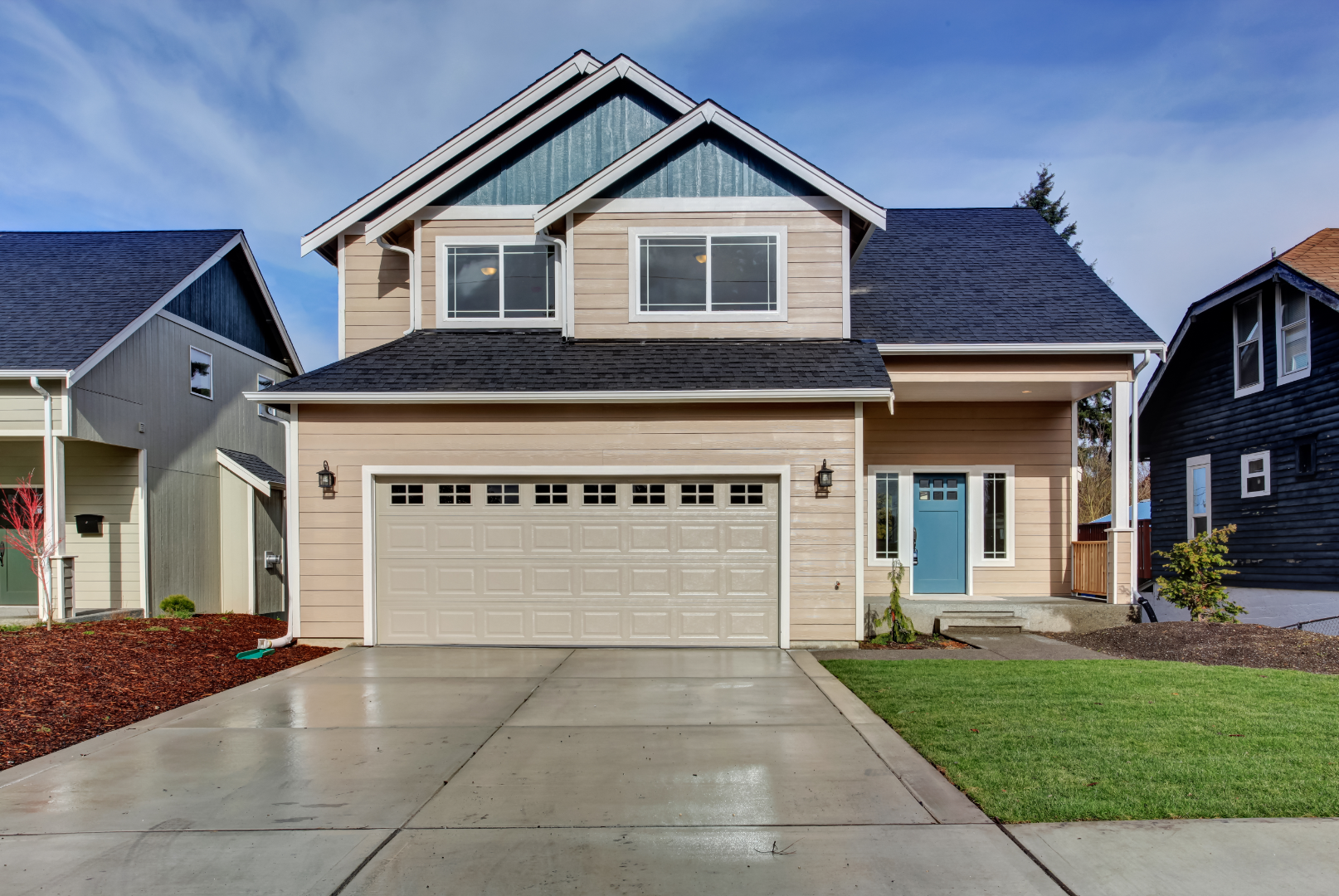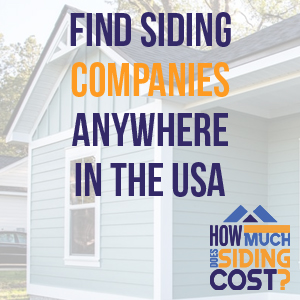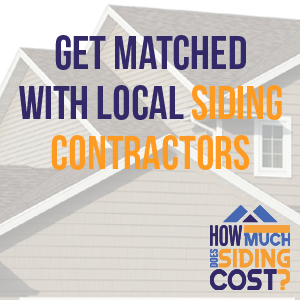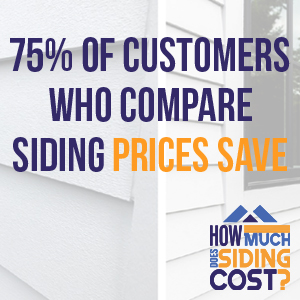
How Much Does 2,000 Square Feet of Vinyl Siding Cost?
Vinyl siding has long been a popular choice among homeowners and contractors alike, thanks to its durability, versatility, and ease of maintenance. It’s available in a plethora of colors and styles, easily matching various home exteriors. But how much does it cost to clad a 2,000-square-foot home in vinyl siding? This blog post will delve into the factors that determine the cost, offer a rough estimate, and explore some cost-saving tips.
Cost Factors for Vinyl Siding
Before we dive into the numbers, it’s crucial to understand the various factors that influence the cost of vinyl siding. Here are some of the key elements:
- Quality of Materials: Vinyl siding comes in a wide range of quality levels, which directly affect the cost. Lower-quality options are cheaper, but they may not last as long or offer the same aesthetic appeal as higher-quality alternatives.
- Style and Color: Certain styles and colors of vinyl siding cost more than others. For instance, premium colors and styles that mimic the look of wood or stone tend to be more expensive.
- Labor Costs: The cost of installation can vary greatly depending on your location, the complexity of the job, and the contractor you choose.
- Trim, Fascia, and Soffit: These additional features can enhance the aesthetic appeal and functionality of your siding but will add to the overall cost.
- Removing Old Siding: If your project involves removing and disposing of old siding, this will also contribute to the total cost.
Estimating the Cost
Given the above factors, the cost of vinyl siding can range from as low as $2 per square foot to over $10 per square foot when fully installed. Let’s consider an average cost for materials and installation of about $7 per square foot for a standard quality vinyl siding.
Therefore, for a house that requires 2,000 square feet of vinyl siding, you might expect to pay around:
2,000 sq ft x $7 = $14,000
This is a ballpark figure. Depending on the factors outlined above, the cost could be lower or higher.

Cutting Down the Costs
While vinyl siding is a significant investment, there are ways to manage the costs:
- Compare Quotes: Reach out to multiple contractors for quotes. This will give you an idea of the cost range and help you identify the most cost-effective option.
- Seasonal Discounts: Some contractors offer discounts during their off-peak seasons. Scheduling your project during these times might save you some money.
- Do It Yourself: If you’re handy and willing to put in the time and effort, you could consider installing the vinyl siding yourself. However, keep in mind that incorrect installation can lead to issues down the line, so it’s essential to be confident in your abilities before taking on this project.
- Choose Standard Colors and Styles: Opting for standard colors and styles, rather than premium options, can help keep costs down.
The cost of installing vinyl siding on a 2,000-square-foot home can vary widely, influenced by a range of factors from materials to labor. While our estimate puts the cost around $14,000, this figure can be higher or lower based on your unique needs and circumstances. Nevertheless, with careful planning, budgeting, and perhaps a bit of shopping around, you can find a vinyl siding option that suits both your home and your budget.
Vinyl Siding vs. Other Siding Materials: A Cost Comparison
When considering new siding for your home, vinyl isn’t the only option on the table. There are several types of siding available, each with its own set of pros, cons, and costs. How does vinyl compare to other siding materials? Let’s dive into a cost comparison to provide a better understanding.
Wood Siding
Wood siding is a traditional choice that offers a classic, timeless appeal. It comes in a variety of styles, including clapboard, shakes, and shingles. The cost of wood siding can vary significantly based on the type and quality of the wood. On average, wood siding costs between $5 to $14 per square foot installed, making it generally more expensive than vinyl. However, keep in mind that wood siding requires more maintenance over time to protect it from elements, which can add to the overall cost.

Aluminum Siding
Aluminum siding was popular before vinyl siding entered the market. It’s durable, fire-resistant, and available in a variety of colors. The cost of aluminum siding ranges from $3 to $6 per square foot installed, which is comparable to or slightly less than vinyl. However, aluminum can dent and fade over time, which can lead to additional costs for repairs or replacement.
Fiber Cement Siding
Fiber cement siding, like the popular Hardie Board, is made from a mix of wood fibers, cement, clay, and sand. It’s extremely durable, fire-resistant, and can mimic the look of wood, brick, or stone. Fiber cement siding costs between $6 to $13 per square foot installed. While it’s more expensive upfront than vinyl, it can last longer and potentially offer a better return on investment in the long run.
Brick Siding
Brick siding offers excellent durability and a classic look that many homeowners love. It’s also fire-resistant and requires minimal maintenance. However, brick is one of the most expensive siding options, ranging from $6 to $15 per square foot installed. While the initial cost is high, its longevity can make it cost-effective over time.
Stucco Siding
Stucco is a popular choice in certain regions like the southwestern United States. It’s highly durable, energy-efficient, and provides a unique aesthetic. The cost for stucco siding ranges from $6 to $9 per square foot installed. Similar to brick, stucco is more expensive upfront but offers excellent durability.
The cost of vinyl siding is generally less expensive or comparable to many other types of siding materials when considering the initial installation costs. However, it’s crucial to consider other factors like longevity, maintenance needs, aesthetic preferences, and the size of your home. The quality of the materials chosen, regardless of the type of siding, will also significantly impact the cost, performance, and look of your siding. Choosing the right siding involves a balance between cost, durability, maintenance, and aesthetics. Vinyl siding continues to be a popular choice due to its affordability, variety of options, and ease of maintenance.

The Benefits of Vinyl Siding
While the cost of vinyl siding is a significant factor when making a decision, it’s also essential to consider the many benefits it provides. After all, siding is a long-term investment in your home’s appearance, durability, and energy efficiency. Here are some compelling reasons why vinyl siding could be the ideal choice for your home:
1. Durability
Vinyl siding is known for its robust durability. It can withstand high winds, heavy rain, and even hail. Unlike wood, it’s also impervious to termites and other pests. Quality vinyl siding is resistant to rust, rot, and corrosion. Moreover, it doesn’t warp or fade over time, ensuring that your home continues to look great for years.
2. Low Maintenance
Vinyl siding is virtually maintenance-free. It doesn’t need to be painted, stained, or caulked. It resists mold and mildew, which can be a significant issue with other types of siding. A simple wash with soap and water is typically all that’s required to keep it looking fresh and clean.
3. Cost-Effective
When compared to other types of siding, vinyl is a cost-effective choice. The material itself is less expensive, and because it’s lightweight and easy to install, labor costs are often lower. Also, due to its durability and low maintenance requirements, long-term costs are minimized.
4. Energy Efficiency
Insulated vinyl siding provides an added layer of thermal protection, improving your home’s energy efficiency. This insulation can help keep your home warmer in winter and cooler in summer, reducing energy consumption and saving you money on utility bills.

5. Aesthetic Appeal
Vinyl siding comes in a wide array of colors and styles, allowing you to create the perfect look for your home. Whether you prefer a traditional look with horizontal panels or a more distinctive appearance with scallops or shingles, vinyl siding can accommodate your preferences. Some vinyl siding can even mimic the look of wood, stone, or slate.
6. Increased Home Value
Quality, well-maintained siding can increase your home’s curb appeal and overall value. Should you decide to sell your home, new siding can provide a significant return on investment.
Vinyl siding offers a host of benefits, making it an attractive option for many homeowners. Its durability, low maintenance, cost-effectiveness, energy efficiency, aesthetic appeal, and potential for increasing home value combine to make vinyl siding an excellent choice for your home’s exterior. However, every home is unique, and it’s essential to consider all factors, including your budget, needs, and preferences when choosing the right siding material.
Determining How Much Vinyl Siding You’ll Need
When it comes to purchasing vinyl siding, one of the crucial questions homeowners need to answer is, “How much will I need?” Estimating the square footage of siding required is a critical step in planning your siding project and can help you budget accordingly. Here’s how you can figure out how much vinyl siding you’ll need for your home.
- Step 1: Measure Your Home’s Exterior
Start by measuring the height and width of each exterior wall of your home, rounding up to the nearest whole foot. This will give you a series of rectangles or squares (if your home has a more complex shape, you may also have triangles or other shapes). Calculate the square footage of each shape. For rectangles and squares, multiply the height by the width. For triangles, multiply the base by the height and then divide by 2. Add up these amounts to get a total square footage.
- Step 2: Subtract Doors and Windows
Subtract the square footage of doors and windows since you won’t be placing siding in those areas. Standard sizes can be used for this calculation, such as 20 square feet for doors and 15 square feet for standard windows. However, for more accurate measurements, you may measure these areas directly.
- Step 3: Add Extra for Waste
Even with careful planning and installation, some waste is inevitable due to cutting and fitting the siding. It’s recommended to add an additional 10% to your total to account for this.
- Step 4: Consider Unique Features
If your home has unique features, such as dormer windows or multiple corners, you may need extra siding to cover these areas. Consult with a professional if your home’s architecture is complex.

Let’s consider an example. Suppose your home’s exterior walls total 2,200 square feet, and your doors and windows total 200 square feet. Subtracting the doors and windows from the total gives you 2,000 square feet. Adding 10% for waste gives a final total of 2,200 square feet of vinyl siding required for your project.
Keep in mind, this is a simplified example and your actual needs may vary. It’s always a good idea to consult with a siding professional to ensure accurate measurements.
Understanding how to calculate the amount of vinyl siding you need is a critical aspect of planning your siding project. Armed with this knowledge, you can estimate your project’s cost more accurately and ensure you have enough material to complete the job. Remember, while it’s possible to make a rough estimate on your own, consulting with a siding professional is the best way to get an accurate measurement.
Vinyl Siding: Material Costs, Home Size, and Condition of Existing Siding
When considering the installation of new vinyl siding, several variables can affect the final price. Factors such as the material cost, the size of your home, and the condition of the existing siding play significant roles in the overall expenditure. In this section, let’s explore how these elements impact the cost of vinyl siding.
Material Cost
The material cost constitutes a large portion of your siding project’s total expense. Vinyl siding is made from a type of plastic called polyvinyl chloride (PVC), which is relatively inexpensive compared to other siding materials like wood, brick, or fiber cement. Prices can range from $2 to $7 per square foot for the vinyl siding material alone, depending on the style, quality, and color you choose.
In addition to the vinyl siding panels, other materials needed for installation—such as nails, house wrap, foam insulation, and trim—should be factored into the overall material cost.

Size of Your Home
Naturally, the larger your home, the more vinyl siding you’ll need. A larger home will require more siding panels, more fasteners, and more trim. Thus, the size of your home directly affects the material costs and labor costs. The complexity of your home’s design can also influence the cost; a home with more corners or levels may require more intricate labor, which could increase the overall project cost.
Condition of Existing Siding
If your home’s existing siding is in good condition, it’s possible to install new vinyl siding over it, saving you the cost and effort of removal and disposal. However, siding in poor condition—rotten wood, warped boards, pest infestations—will need to be removed before installing the new siding, adding to the project’s labor and disposal costs. Furthermore, any damage uncovered during the removal process, such as water damage or mold, will need to be addressed before proceeding with the siding installation, potentially adding more costs.
When budgeting for a vinyl siding project, homeowners should consider the material cost, the size of their home, and the condition of the existing siding. Understanding these factors can help provide a more accurate estimate of the project’s overall cost. However, every home is unique, and costs can vary, so it’s always a good idea to consult with a professional for an accurate quote. Despite the costs involved, the durability, low maintenance, and aesthetic appeal of vinyl siding make it a worthwhile investment for many homeowners.
Diving Deeper into Vinyl Siding: Installation, Types, and Weather Resistance
Vinyl siding is a popular choice for many homeowners, offering an ideal blend of aesthetics, durability, and affordability. However, there are several key factors to consider when planning a vinyl siding installation project. This section will provide an overview of the various vinyl siding types, discuss how extreme weather can impact vinyl siding, and explain how to determine the total amount of vinyl required for your home’s siding.

Vinyl Siding Installation
The process of vinyl siding installation can be complex, and while some homeowners might consider it a DIY project, it’s typically best left to the professionals. They can ensure proper installation, which is crucial for the siding’s performance and longevity. Here are a few key steps involved in a typical vinyl siding installation:
- Removing Old Siding: If the current siding is in poor condition, it must be removed before the new siding is installed.
- Preparing the Walls: This includes applying a water-resistant barrier to protect the underlying structure and installing insulation for added energy efficiency.
- Installing the Siding: The vinyl panels are then installed, starting from the bottom and working up, ensuring they’re level and secure.
- Finishing Touches: Trim and molding are added around doors, windows, and corners to complete the look.
Vinyl Siding Types
There are several types of vinyl siding to choose from, each offering its own aesthetic and price point. Here are a few common options:
- Clapboard: This traditional style mimics the look of horizontal wooden boards.
- Dutch Lap: Similar to clapboard but with a decorative groove at the top of each panel, adding shadow and visual interest.
- Board and Batten: This vertical siding gives a rustic look and can make your home appear taller.
- Shake: This mimics the look of cedar shake shingles, providing a classic, natural aesthetic.
Impact of Extreme Weather
While vinyl siding is quite durable, extreme weather can impact its longevity:
- Heat: High temperatures can cause vinyl siding to expand. While the material is designed to withstand typical temperature fluctuations, extreme heat could potentially warp or buckle the siding.
- Cold: In cold temperatures, vinyl siding can become more brittle, making it susceptible to cracking if struck by a hard object.
- Wind: Vinyl siding is designed to withstand high winds, but extremely strong wind gusts can potentially damage the siding.

Determining Total Vinyl
Calculating the total amount of vinyl required for your home’s siding is crucial for budgeting your project. This is generally based on the total square footage of your home’s exterior walls, minus any non-siding areas like doors and windows. Remember to add a surplus (usually about 10%) to account for cutting and fitting waste.
Understanding the specifics of vinyl siding installation, knowing the various types of vinyl available, considering the impact of extreme weather, and accurately calculating the total vinyl needed will ensure a successful siding project. Always remember that the type of vinyl you choose will significantly impact the overall aesthetic and cost of your project. With careful planning and professional installation, vinyl siding can enhance your home’s curb appeal and provide a durable, low-maintenance exterior for years to come.
Top 10 Vinyl Siding Brands in 2023
The market for vinyl siding is vast, with numerous brands offering a wide range of colors, styles, and quality levels. So, which companies stand out from the rest? Here, we will review the top 10 vinyl siding brands in 2023 that have established a solid reputation for their high-quality products, innovative designs, and excellent customer service.
1. CertainTeed
CertainTeed is a highly reputable brand known for its extensive range of styles and colors. They offer an industry-leading spectrum of shades and various styles from traditional clapboard to unique shake and shingle options.
2. Alside
Alside provides a broad range of vinyl siding options. Their Prodigy line is noted for its energy efficiency and exceptional durability. It’s available in several styles and a wide range of colors.
3. Royal Building Products
Royal Building Products offers a balance of affordability, durability, and aesthetic appeal. Their premium line, Royal Crest, is a popular choice among homeowners and contractors for its stylish design and excellent weather resistance.
4. Ply Gem
Ply Gem offers vinyl siding options that cater to a variety of budgets and aesthetic preferences. They’re known for their Mastic line of siding, which offers great durability and an extensive selection of colors and styles.
5. James Hardie
Although primarily known for its fiber cement siding, James Hardie also offers a high-quality vinyl siding line. Their products are renowned for durability and come in various styles and colors.

6. Kaycan
Kaycan is a global leader in vinyl siding, offering an extensive product line with options to fit a wide range of budgets. They’re particularly known for their durability and vibrant, long-lasting colors.
7. Mitten
Mitten offers a robust selection of vinyl siding products, known for their durability and excellent color retention. Their products also stand out for their detail and texture that closely mimic natural materials.
8. Georgia-Pacific
Georgia-Pacific offers a range of affordable yet durable vinyl siding options. They offer traditional lap siding as well as more unique options like scalloped and dutch lap siding.
9. ABTCO
ABTCO is recognized for its high-quality vinyl siding products, known for their durability, easy maintenance, and broad range of styles and colors. Their products are also backed by a strong warranty.
10. Norandex
Norandex offers an impressive selection of vinyl siding, known for their durability and rich colors. Their products are designed to withstand harsh weather conditions while maintaining their vibrant color.
The choice of vinyl siding brand will significantly affect the quality, aesthetics, and longevity of your home’s exterior. The above list represents some of the best brands in the market as of 2023, offering a variety of options to meet diverse homeowner needs and preferences. Each of these brands has a reputation for delivering high-quality products that balance durability, visual appeal, and cost-effectiveness. Remember, when choosing vinyl siding, it’s essential to consider not just the cost but also the product’s quality, the brand’s reputation, and the warranty offered.
